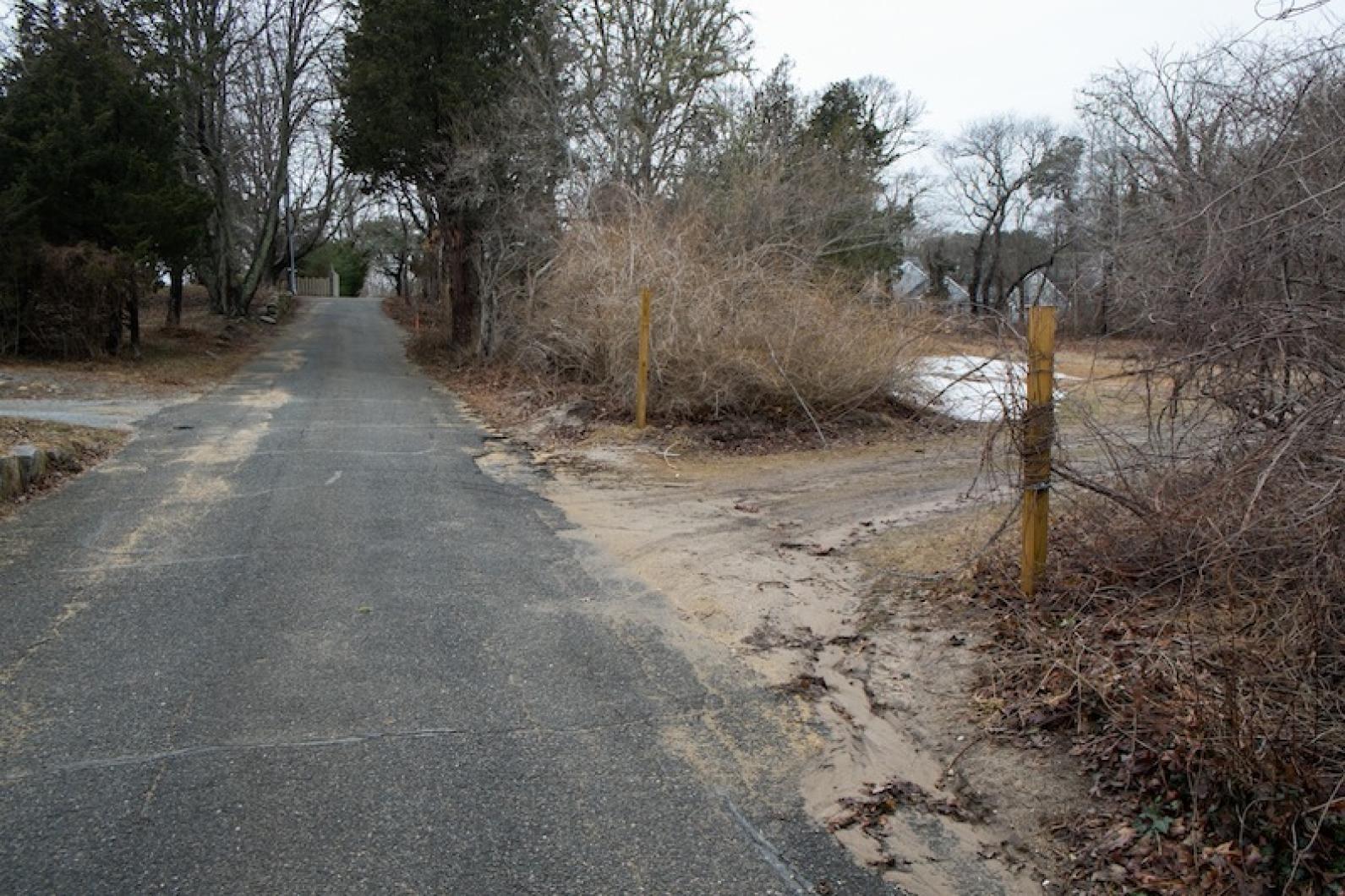A project to develop seven acres of land near downtown Edgartown will bypass a regional planning review, following a vote at the Martha’s Vineyard Commission Thursday night.
The regional planning board voted 7-4 with one abstention against holding a public hearing for the subdivision on Mullen Way, following a detailed discussion of the project’s scope, its potential impact on local resources and rare species habitat considerations.
Developer Michael Kidder is proposing to build a nine-lot residential subdivision at Mullen Way, a narrow street off Pease’s Point Way.
“If this was really determined to be a regional impact, it would basically mean to me that almost any development on the Island, no matter where it is, has regional impact,” said Edgartown commissioner James Joyce, who endorsed local review.
The vote remands the project back to the local planning board, which plans to hold a public hearing about the project on April 7.
Mr. Kidder’s property almost faced commission review nearly a decade ago.
In 2006, a nine-lot subdivision was proposed for the contiguous 8.3-acre property, which was referred to the Martha’s Vineyard Commission and subsequently withdrawn.
This past December, Mr. Kidder sold two lots fronting Mullen Way, before proposing a smaller 10-lot subdivision, which earned the unanimous approval of the Edgartown planning board in January.
But later, the board rescinded their vote when town counsel advised that referral to the MVC was required. In turn, the applicant reduced the number of lots, pushing it below the threshold for mandatory referral to the commission.
But the planning board still voted to refer the project to the MVC, citing habitat considerations.
The land has been designated as habitat for the imperial moth (Eacles imperialis), a species listed as threatened by the state.
According to MVC rules for developments of regional impact, a division of land that includes more than two acres of significant habitat must be referred for review, as well as any project that proposes site alterations or clearance of more than two acres of significant habitat.
In testimony on Mr. Kidder’s behalf, surveyor Doug Hoehn said the Natural Heritage and Endangered Species Program, the state agency that protects rare species, had signed off on a similar plan. On that basis, he said commission’s major concerns had already been dealt with.
“Since we have adequately addressed these issues with Natural Heritage, we don’t feel this rises to the level of regional impact,” he said.
But some questioned the rigor of the state’s review.
“They identify the habitat by looking at Google maps, not by coming down here and standing in those woods and determining whether or not they have real impact,” said West Tisbury commissioner Linda Sibley, who later voted not to review the project.
Thursday’s discussion also spanned wastewater restrictions, neighborhood safety concerns due to the narrow width of the road, and a plan to allow an easement over the property, connecting two walking trails.
Those who pushed for a regional public hearing also questioned the true size of the project, and debated whether the two front lots, which are contiguous and related, should be included, forcing a mandatory review.
Aquinnah commissioner James Vercruysse said it would have regional impact, though he voted not to review it.
“There are 11 lots there, and they are going to be putting material into the ground and into the air and I think it’s going to have an effect on the water quality,” he said.
Clarence (Trip) Barnes 3rd spoke emphatically against a regional review, citing a letter from resident Tom Teller supporting the development.
“The man lived there for 56 years and he should have some say in what is going on in his neighborhood,” Mr. Barnes said. “He’s a guy who is very interested in, maybe not the moths, but in keeping the town basically the way it is.”
Mr. Barnes, Christina Brown, Josh Goldstein, Mr. Joyce, Ms. Sibley, Mr. Vercruysse and Joan Malkin voted against a full commission review of the project. John Breckenridge, Rob Doyle, Fred Hancock and Abe Seiman voted in favor of review, and Kathy Newman abstained.
In other action, the commission voted to allow a new bowling alley in Oak Bluffs to hook up to the town sewer. A year ago, when the commission reviewed the bowling alley project, the developers said they would install an advanced but experimental denitrification system. But last week, town’s wastewater commission approved a sewer hook-up, a less expensive alternative. The commission approved the change to the plans with little discussion.





Comments (9)
Comments
Comment policy »